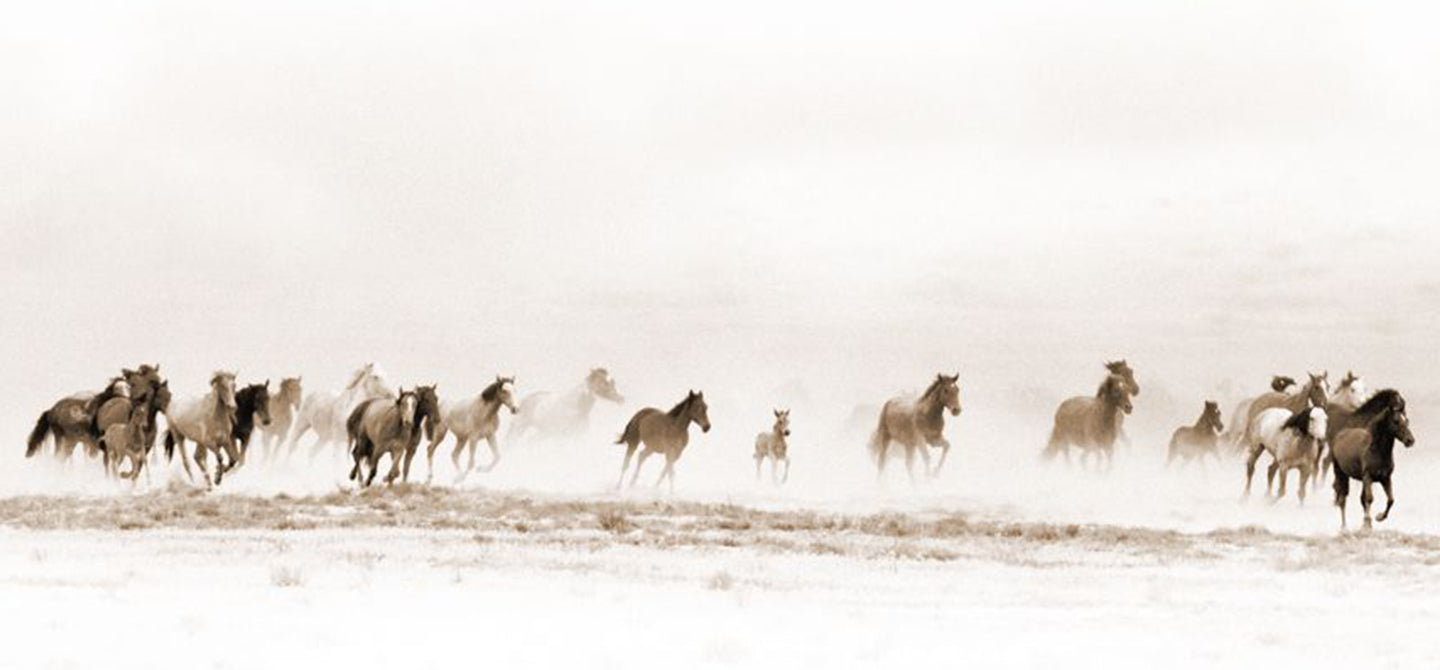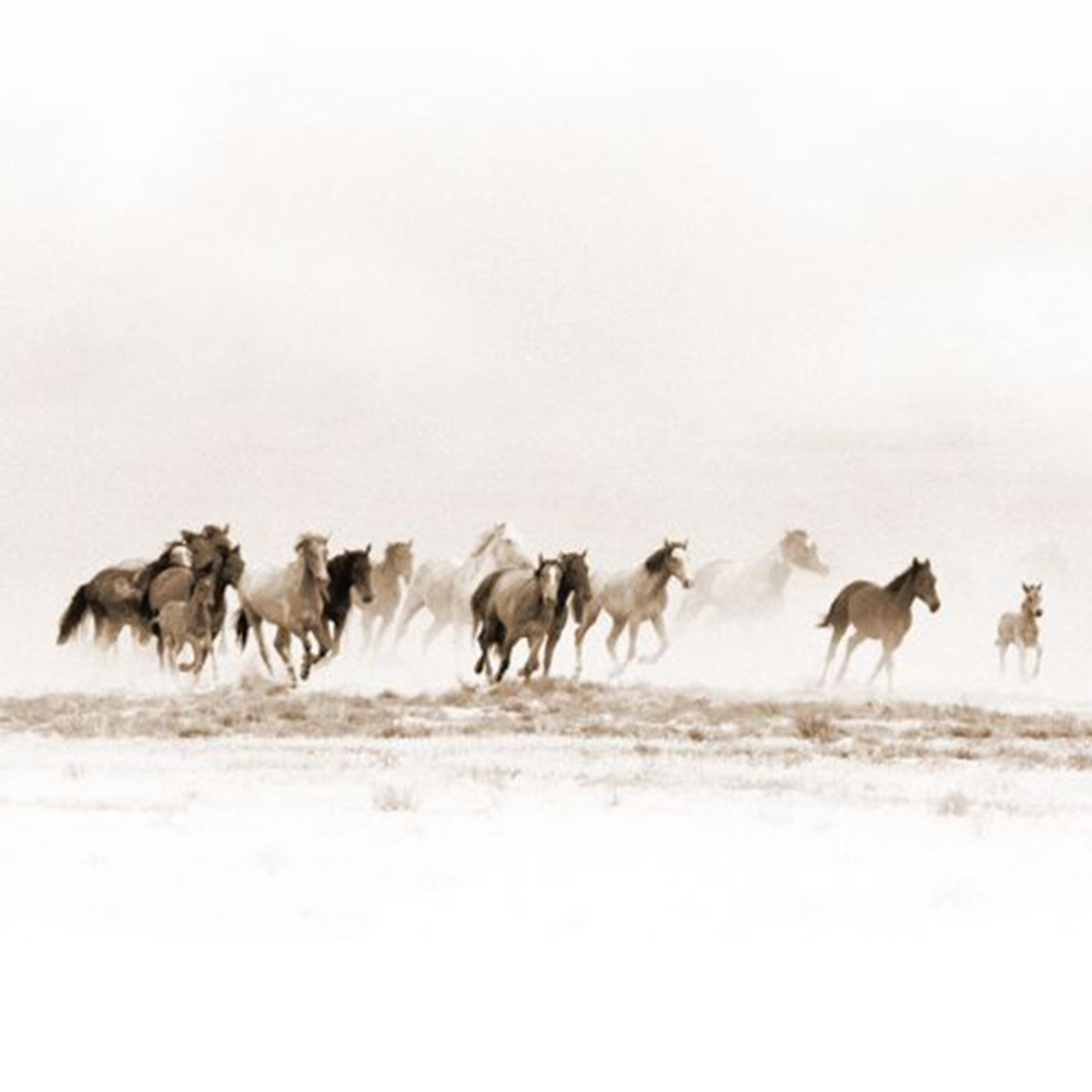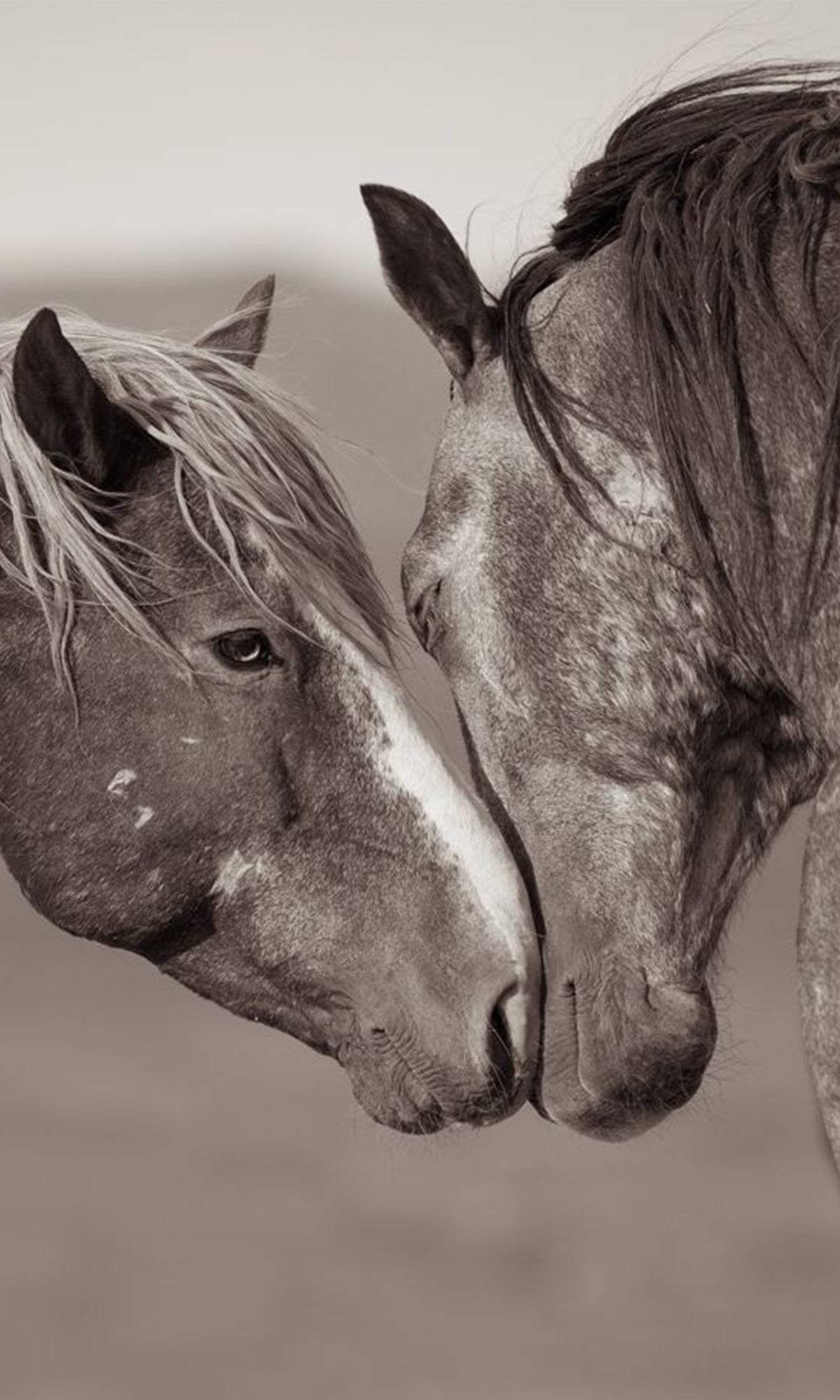Close Encounter: America’s Last Wild Horses
There are 70,000 wild horses left out West, and many are about to lose their freedom. We asked Ellie Phipps Price, longtime horse-whisperer and president of the American Wild Horse Campaign, how we can help preserve them.

Ellie Phipps Price could never be accused of doing things half way. The Sonoma Valley wine producer—Dunstan Wines turns out acclaimed pinot noirs and chardonnays—also owns a 2,000-acre ranch, where she keeps more than 200 wild horses she rescued from imminent slaughter. The mother of two and board president of the American Wild Horse Campaign is at the front lines of a battle over federal management of wild mustang herds, whose captive members now outnumber those left in the wild. She has also produced a narrative documentary film, American Mustang—not to be confused with the new Robert Redford-produced The Mustang, about a convict who trains wild horses who’ve been corralled for auction by the government. Recently, the federal Bureau of Land Management has threatened to round up Utah’s revered Onaqui herd, and we asked Phipps Price to tell us more about the disappearance of these beautiful creatures, and what we can do to help.
How many wild horses are there left in the U.S. and where are they concentrated?
There are about 70,000 wild horses left in the West, according to the federal government. That’s down from about 2 million at the turn of the 20th century. Wild horses live in 10 Western States: California, Oregon, Nevada, Idaho, Wyoming, Utah, New Mexico, Arizona and Montana. More than half of our wild horses live in Nevada.
How long have they been here and why are they now perceived to be a problem?
The horse as a species evolved on the North American continent. About 12,000 years ago, horses went locally extinct here, but not globally extinct. When the Spanish brought horses back to the continent in the 1500’s, they were reintroducing a native species.
The perception that horses are a problem stems from the belief that they are a non-native species, which is incorrect according to evolutionary biologists, paleontologists and experts in species extinction. The history of our country is in the bloodlines of our wild horses. Horses played a role in every significant development in our nation’s history, from building the West to fighting alongside Americans in our most significant wars. They're the horse we rode in on. Horses compete for resources with commercial interests on western public lands, in particular the livestock grazing industry. These special interests advance unscientific claims that there are too many horses, and that they are damaging the range, even though they are vastly outnumbered by cattle and sheep on Western public lands.
How are they protected – and how has that changed in recent years?
The Wild Free-Roaming Horses and Burros Act was passed unanimously by Congress in 1971, designating wild horses as “living symbols of the historic and pioneer spirit of the West” to be “protected from capture, branding, harassment, or death.” However, the Act has been weakened over the years due to pressure from the Cattlemen’s lobby, which continues to pressure Congress to legalize the mass slaughter of these national icons. These are very dangerous times for our wild horses.
"Horses played a role in every significant development in our nation’s history.”
How did you first become aware of their plight?
I read an article in Vanity Fair about how American wild horses were being mismanaged by our government. I started doing research and talking to people who were involved in the issue. My “aha” moment was when I went to Canyon City, Colorado to a BLM [Bureau of Land Management] holding facility on their big adopting day and saw a sea of more than 3,000 mustangs standing in pens; only 6 horses were adopted at that event. Two of them were by me. I realized that adoption wasn’t going to be the answer for all of these horses that had lost their freedom. Adoption, rescue and sanctuary all have their place in helping wild horses at risk, but they are not the solution to government mismanagement.

We hear that you have a ranch in Northern California that’s home to over 200 wild horses rescued from slaughter. How did that happen?
In the summer of 2010 I attended an auction in Fallon, Nevada where 170 wild horses were going to be sold by the pound to “kill buyers” who would take them across the border and have the horses slaughtered for human consumption. There is an international market for horse meat. I went there with a plan to save the 18 mares with foals by their sides, but when I saw the horses waiting to go into the auction and looked into their eyes, I couldn’t let them go to such a horrible death. We bid against the kill buyers for almost 4 hours and at the end I was able to buy every horse that was there.
We kept the horses on a feedlot in Nevada for almost a year and a half. In 2012, I purchased Montgomery Creek Ranch and founded Montgomery Creek Preserve, a 2,000-acre wild horse sanctuary with long valleys, rolling hills of chaparral, and steep ridges dotted with grey pines—home now to over 200 rescued wild horses and burros, and a robust training and adoption program for some of our younger horses.
What do we need to know about the threatened round-up of Onaqui horses in Utah? What can we do about it?
The Onaqui wild horses are the nation’s most visited and accessible herd. If you approach them quietly, you can literally walk among them—photographers love them. They’re historically and culturally significant to the area and the old Pony Express trail runs right through their habitat! They're unique in that they are basically two large herds made up of smaller family bands, that travel their territory and live their lives within sight of some pretty good dirt roads, so you can drive right up to them.
The BLM wants to remove 80% of this population—it would destroy the herd and rob these horses of the two things most important to them: family and freedom. And we would lose an amazing example of wild horses living free where people can actually see them easily. Their accessibility makes the point that this group of horses could be easily managed with PZP, a humane birth control method.
So is that a better way of dealing with our remaining wild horse populations?
Yes. Wild horses today do not live under the natural conditions required for self-regulation in most cases. Wild horses’ ability to migrate freely to adjust to changing environmental conditions is inhibited by fences that confine them to artificial habitats known as Herd Management Areas. Their populations are held to unnaturally low numbers through inhumane government roundups. And they live on lands where mountain lions—natural predators that would help keep wild horse populations in check—are killed through a government program (Wildlife Services) that removes predators for the benefit of livestock ranching. As a result, in most cases, some form of management is necessary.
"Only the power of the people will... preserve these national icons for future generations of Americans to enjoy.”
Last year Chantecaille partnered with the American Wild Horse Campaign, of which you’re the board president, on our Horse Philanthropy Cheek Shade, called “Joy.” Can you give us an idea of the kinds of initiatives or programs this donation is helping to support?
AWHC is so appreciative of and honored by Chantecaille’s support! It’s been critical to our efforts to keep boots on the ground in wild horse country and eyes on the BLM, by documenting the roundups that annually cause thousands of wild horses to lose their freedom. Your support has been essential to our legislative efforts to protect wild horses from slaughter at both the state and federal level and to our litigation program to stop the worst abuses in the federal management program. Finally, through financial support and spreading awareness, Chantecaille is helping us with our most important task: educating the public about the plight of America’s wild horses and building the grassroots army of citizens necessary to save them. Only the power of the people will defeat the powerful special interest lobbies and preserve these national icons for future generations of Americans to enjoy.

Where can we see wild horses in a responsible way?
AWHC has an interactive map that shows where wild horses live in the U.S. One of the best places to see wild horses is in the Onaqui mountains in Utah. Detailed instructions and tips for seeing them can be found here.
Another great place to see wild horses is Nevada - the state where more than half of our remaining wild horses reside. Our sister site NevadaWildHorses.com has some great information on the best places to see wild horses in the state.
You’ve been around horses your whole life. What do you think we can learn from them?
Horses give back everything you give to them, and more. They read your energy and mirror it back. Working with horses, I have learned to be more in the moment and live my life with intention, because there is a lot of work to do.
You can sign the petition for the Onaqui horses and sign up for AWHC’s email list to stay up to date with the campaign to save them, and support their work by donating here.
All photography by Kimerlee Curyl except where noted. Fine art photographer Kimerlee Curyl has been capturing America's remaining wild horses since 2004. You can see more of her inspiring work here.




